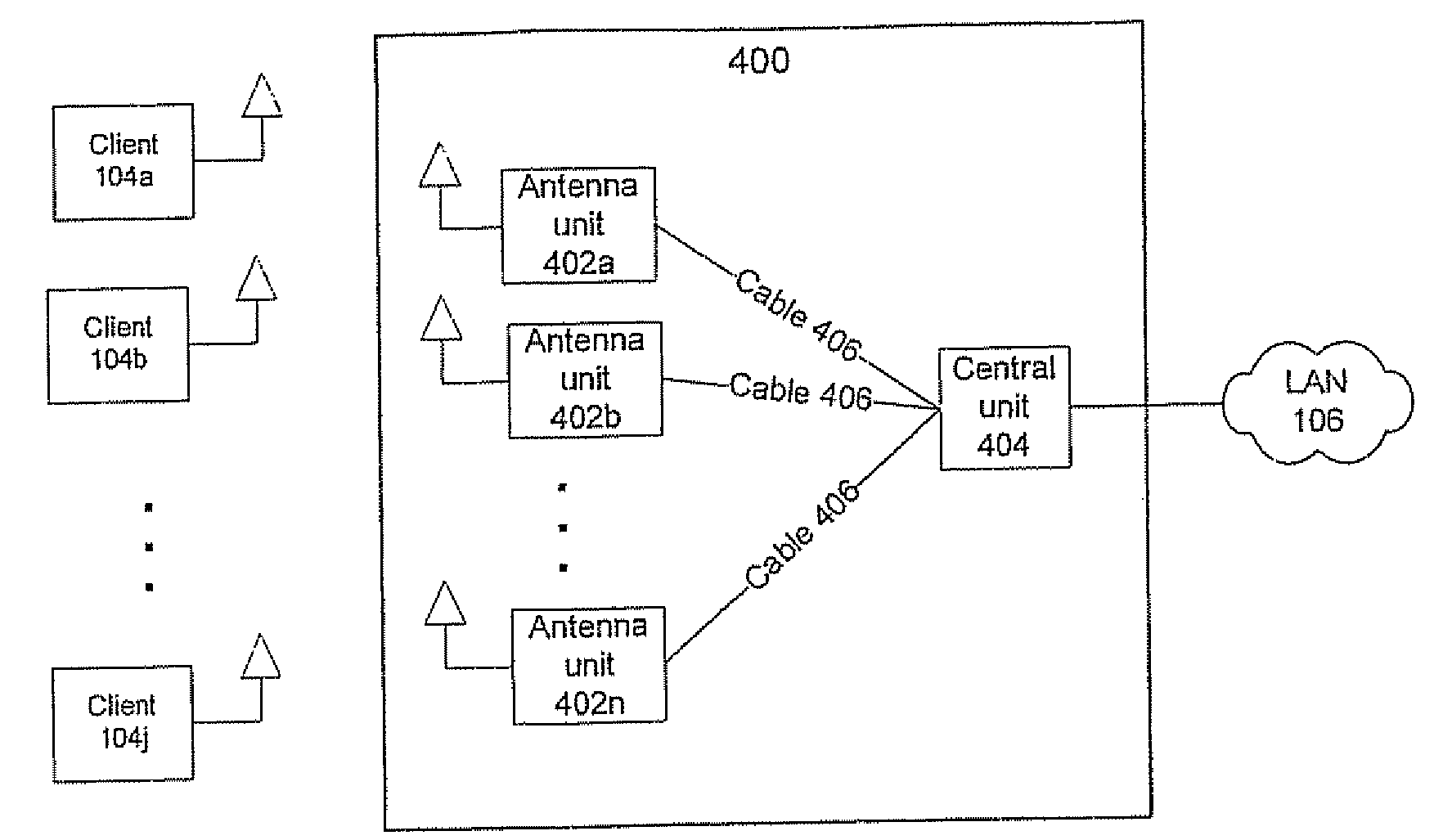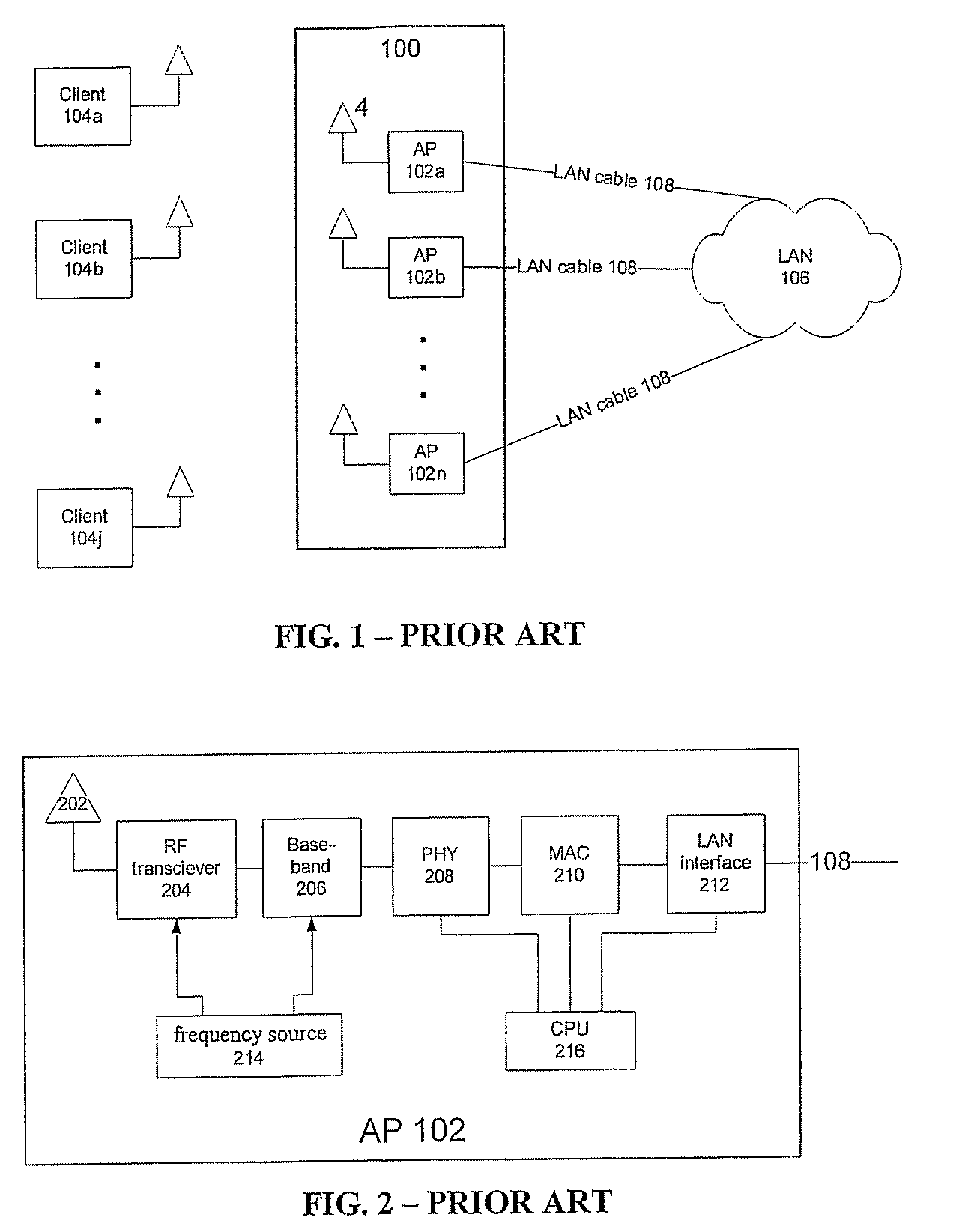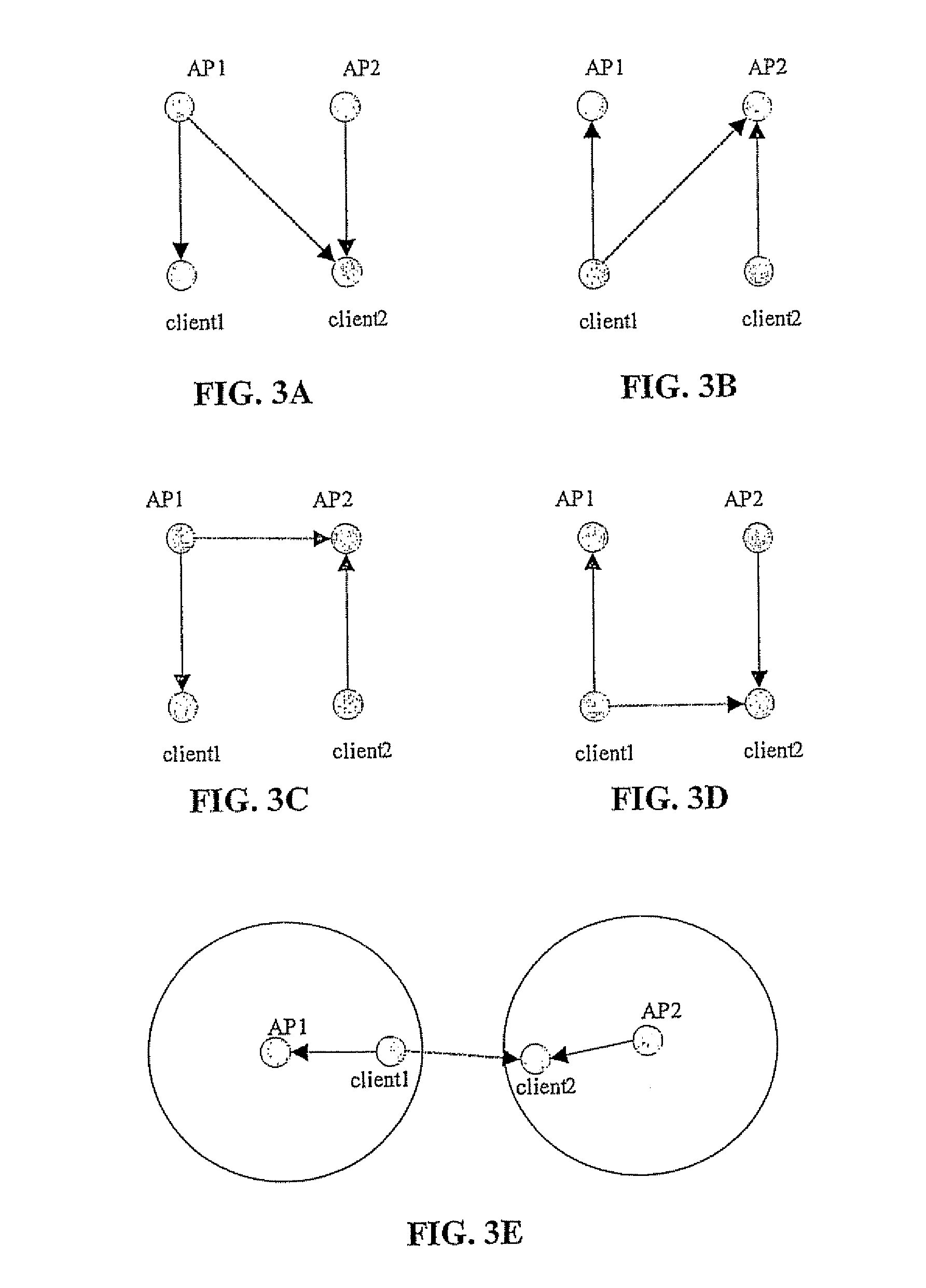Distributed Antenna Wlan Access-Point System and Method
a distributed antenna and access point technology, applied in the field of wlan infrastructure, can solve the problems of mutual interference between neighboring neighbors, general limitation of existing wlan infrastructure systems, and inefficient increase of ap density in order to increase throughput, etc., and achieve the effect of being ready to implemen
- Summary
- Abstract
- Description
- Claims
- Application Information
AI Technical Summary
Benefits of technology
Problems solved by technology
Method used
Image
Examples
Embodiment Construction
[0031]The present invention is of a WLAN AP infrastructure with distributed antenna units and of a corresponding method that provides a novel WLAN infrastructure. The preferred embodiments of the present invention are discussed in detail below. It is to be understood that the present invention is not limited to the details of construction, arrangement, and composition of the components of the system, and is not limited in its application to the details of the order or sequence of steps of operation or implementation of the corresponding method set forth in the following description, drawings, or examples. While specific steps, configurations and arrangements are discussed, it is to be understood that this is done for illustrative purposes only. A person skilled in the relevant art will recognize that other steps, configurations and arrangements can be used without departing from the spirit and scope of the present invention.
[0032]Construction, arrangement, and, composition of the sy...
PUM
 Login to View More
Login to View More Abstract
Description
Claims
Application Information
 Login to View More
Login to View More - R&D
- Intellectual Property
- Life Sciences
- Materials
- Tech Scout
- Unparalleled Data Quality
- Higher Quality Content
- 60% Fewer Hallucinations
Browse by: Latest US Patents, China's latest patents, Technical Efficacy Thesaurus, Application Domain, Technology Topic, Popular Technical Reports.
© 2025 PatSnap. All rights reserved.Legal|Privacy policy|Modern Slavery Act Transparency Statement|Sitemap|About US| Contact US: help@patsnap.com



